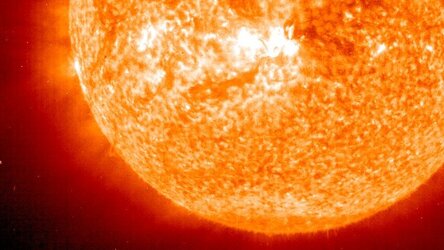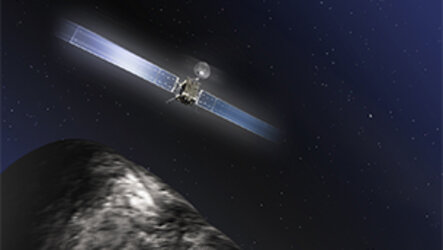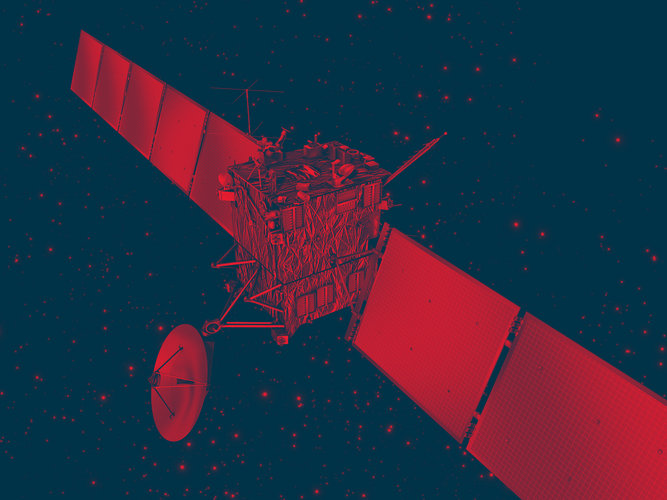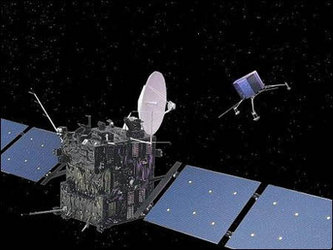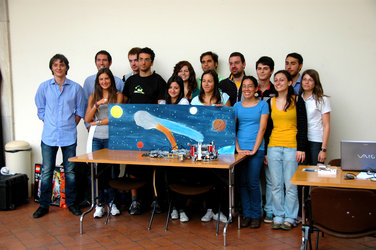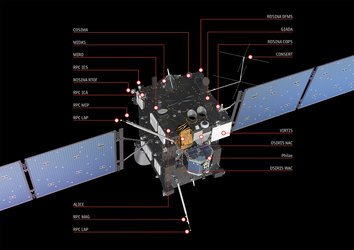A fleeting flyby of a battered world
The long and tumultuous history of asteroid Lutetia was revealed by ESA’s Rosetta spacecraft as it raced past this large, ancient asteroid.
This spectacular movie shows a sequence of images snapped by Rosetta as it flew past the main-belt asteroid on 10 July 2010.
The sequence begins nine and a half hours before Rosetta made its closest pass, when the asteroid still appeared like a distant tumbling speck seen from a distance of 500 000 km.
Surface features quickly loom into view and the movie concludes six minutes after closest approach, with Rosetta 6300 km from the asteroid.
A wide variety of impact craters and other features that scar the surface of Lutetia, all revealed for the first time, provide a window into the asteroid’s geological past.
Perhaps the most prominent feature is a 57 km-wide crater that marks one of the most dramatic collision events in the asteroid’s long history. Lutetia’s oldest craters are estimated to be 3.4–3.7 billion years old, while the youngest regions are just a few tens of millions of years old.
Networks of grooves, fractures and fault lines suggest that seismic events also played a role in shaping the asteroid’s surface.
Lutetia is thought to be a survivor from the very earliest period of Solar System formation some 4.5 billion years ago, and may even have tried to grow a metal heart, just like the planets.
The Rosetta spacecraft is now on its way to rendezvous with comet 67P/Churyumov–Gerasimenko in May 2014. A few months later, its Philae probe will separate to make the first controlled landing on a comet.
Credits: ESA 2012 MPS for OSIRIS Team MPS/UPD/LAM/IAA/RSSD/INTA/UPM/DASP/IDA















 Germany
Germany
 Austria
Austria
 Belgium
Belgium
 Denmark
Denmark
 Spain
Spain
 Estonia
Estonia
 Finland
Finland
 France
France
 Greece
Greece
 Hungary
Hungary
 Ireland
Ireland
 Italy
Italy
 Luxembourg
Luxembourg
 Norway
Norway
 The Netherlands
The Netherlands
 Poland
Poland
 Portugal
Portugal
 Czechia
Czechia
 Romania
Romania
 United Kingdom
United Kingdom
 Slovenia
Slovenia
 Sweden
Sweden
 Switzerland
Switzerland



























